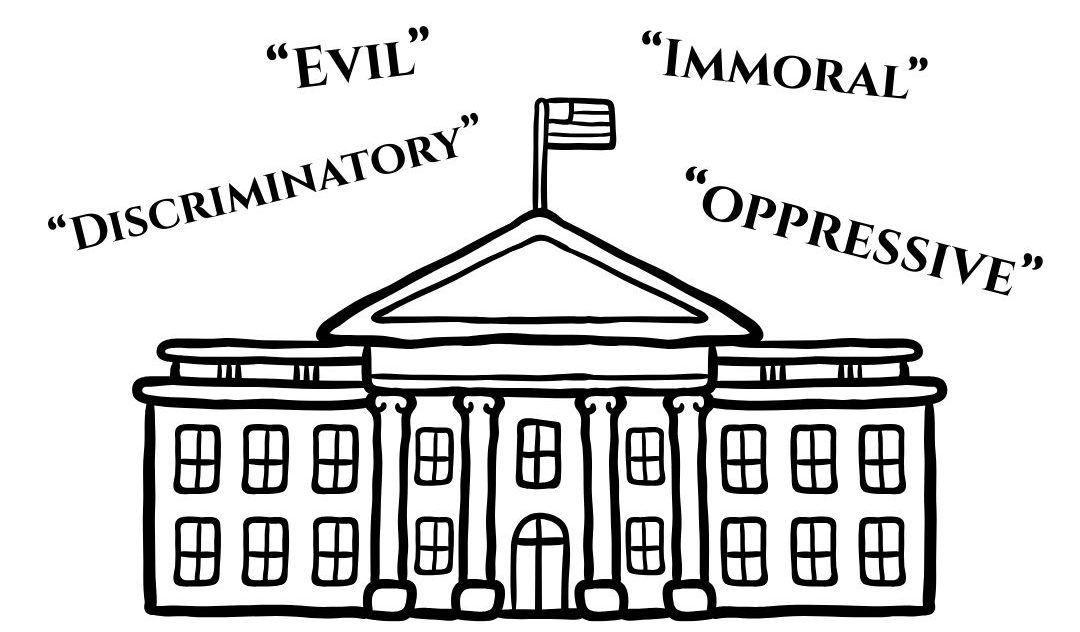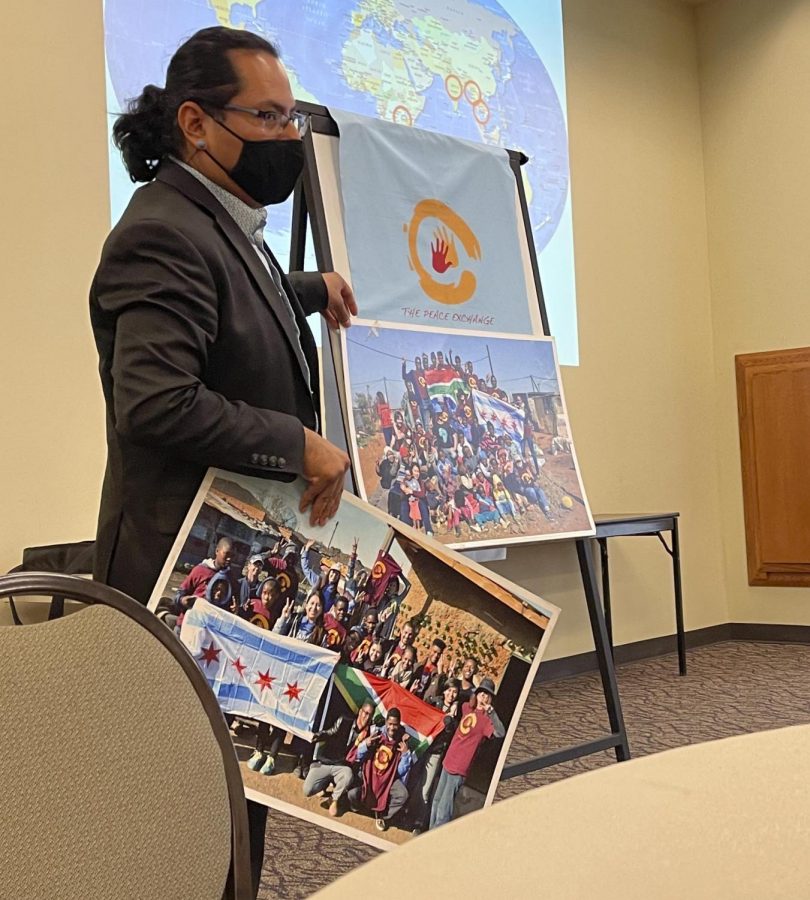Speaker teaches about nonviolent protests, social change
Henry Cervantes, program manager at The Peace Exchange, gives a presentation on nonviolence and social change at the Charleston Carnegie Library, Friday afternoon.
October 24, 2021
The program manager for The Peace Exchange, Henry Cervantes, spoke about nonviolent action and how it relates to social change Friday afternoon in the Charleston Carnegie Public Library.
The presentation, sponsored by the Academy of Lifelong Learning at Eastern, was put on to teach people about how nonviolent action can create and maintain social change.
In his presentation, Cervantes touched on the history of nonviolent protests. He talked about the Children’s March that took place in Alabama in 1963, Cesar Chavez’s “Fighting for Our Lives” movement in 1973 and how all these, and many other nonviolent protests, led to social change historically.
Cervantes also talked about The Peace Exchange, which helps young people in Chicago learn about how to make social change in their lives and how to avoid and resolve conflicts.
The Peace Exchange, where Cervantes works, is based in Chicago. Cervantes said that The Peace Exchange works to mainly recruit young people from African American or Latinx groups in the city of Chicago.
“In oppressed communities it is hard for young people to see that change is possible,” Cervantes said.
Cervantes said he got his start in activism because anger fueled him when he was younger. He said he grew up in a violent area on the lower west side of Chicago and in that community his entire childhood was surrounded by violence. In his early 20s is when he really began to get into nonviolence and protesting.
The Peace Exchange works to follow the three T’s, or three phases of their mission, and they do this every year. Most often they work in communities with violence and try to establish a voice of peace in the neighborhoods they are active in.
Phase one has to do with training. They recruit young people and train them to understand both violence and nonviolence.
Phase two has to do with travel. The Peace Exchange takes the young people they have recruited, and they go to the home countries of activists and learn how those activists had made changes in their home country through nonviolence.
Cervantes said they have taken people to many places such as India, Rwanda, Africa, and Nicaragua. They produce documentaries from these experiences as well.
Phase three has to do with teaching. Back in the city, they teach their recruits about what they learned when they traveled.
Through The Peace Exchange, Cervantes also teaches nonviolence to violent criminals at Cook County Jail and Statesville Correction Center.
The program that allows Cervantes to teach at Cook County is called Sheriff’s Antiviolence Effort or SAVE.
The program at Statesville Correction Center is through the North Park Theological Seminary. The inmates at Statesville get to take this class as a part of getting their degrees in ministry. The inmates get to choose and apply to this program.
“Anyone can use this weapon of nonviolence,” Cervantes said.
Bonnie Buckley, former Executive Director at Sexual Assault Counseling and Information Service, commented on how positive and negative movements can have impact with powerful messages.
“You cannot solve a problem until you acknowledge it,” Cervantes said.
Cervantes said one thing everyone can do to support nonviolence movements is care and that organizations can host seminars to bring awareness to these kinds of nonviolent movements throughout history.
Morgan Bledsoe can be reached at 581-2812 or mmbledsoe@eiu.edu


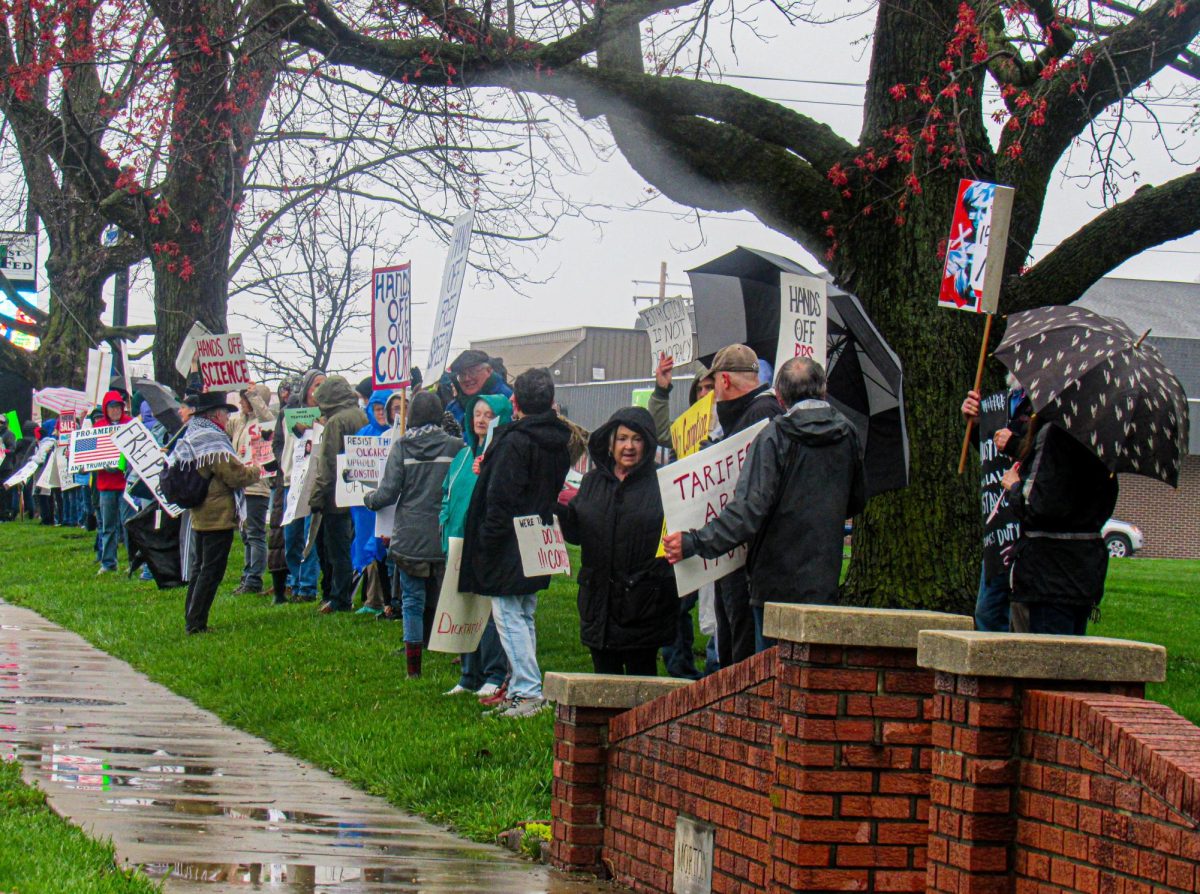
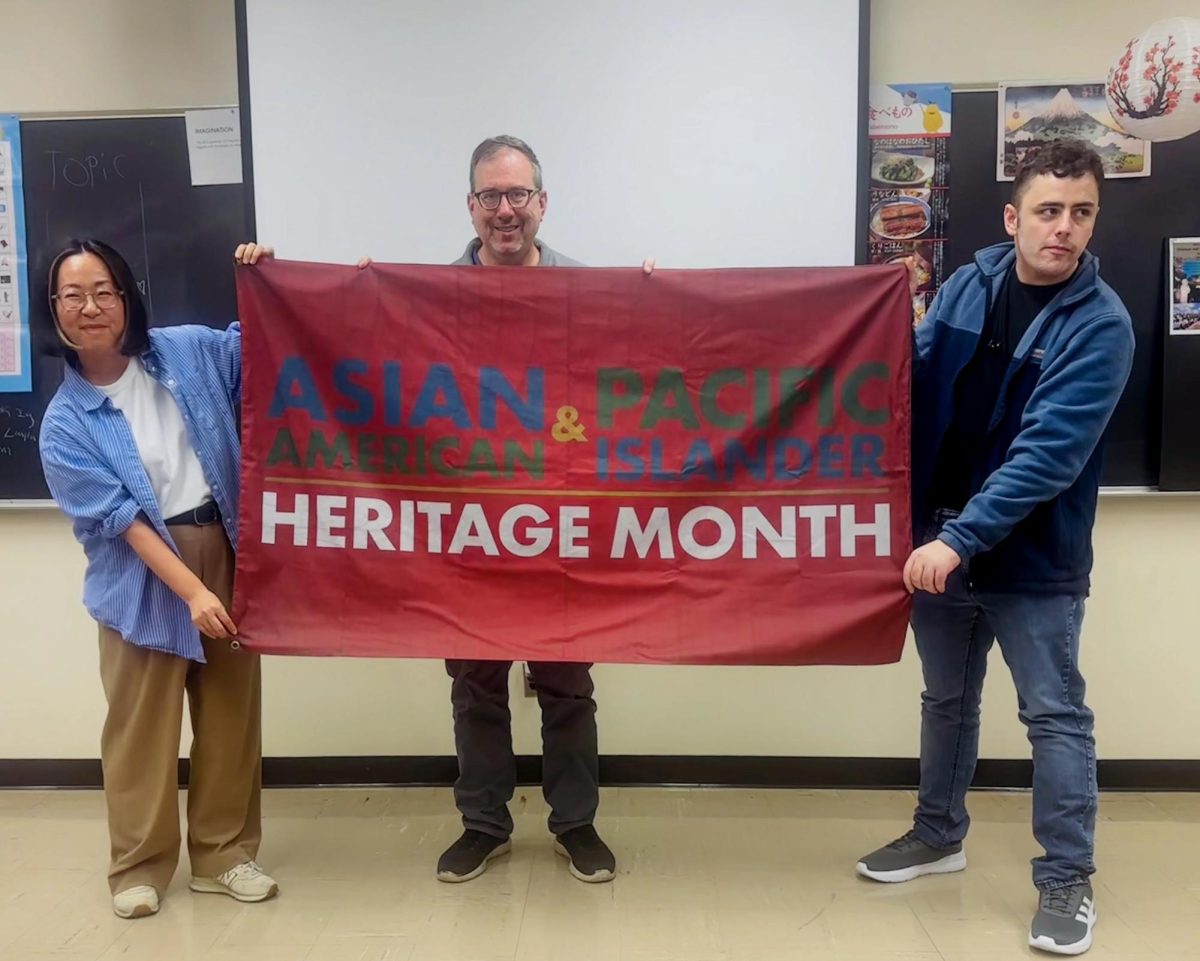
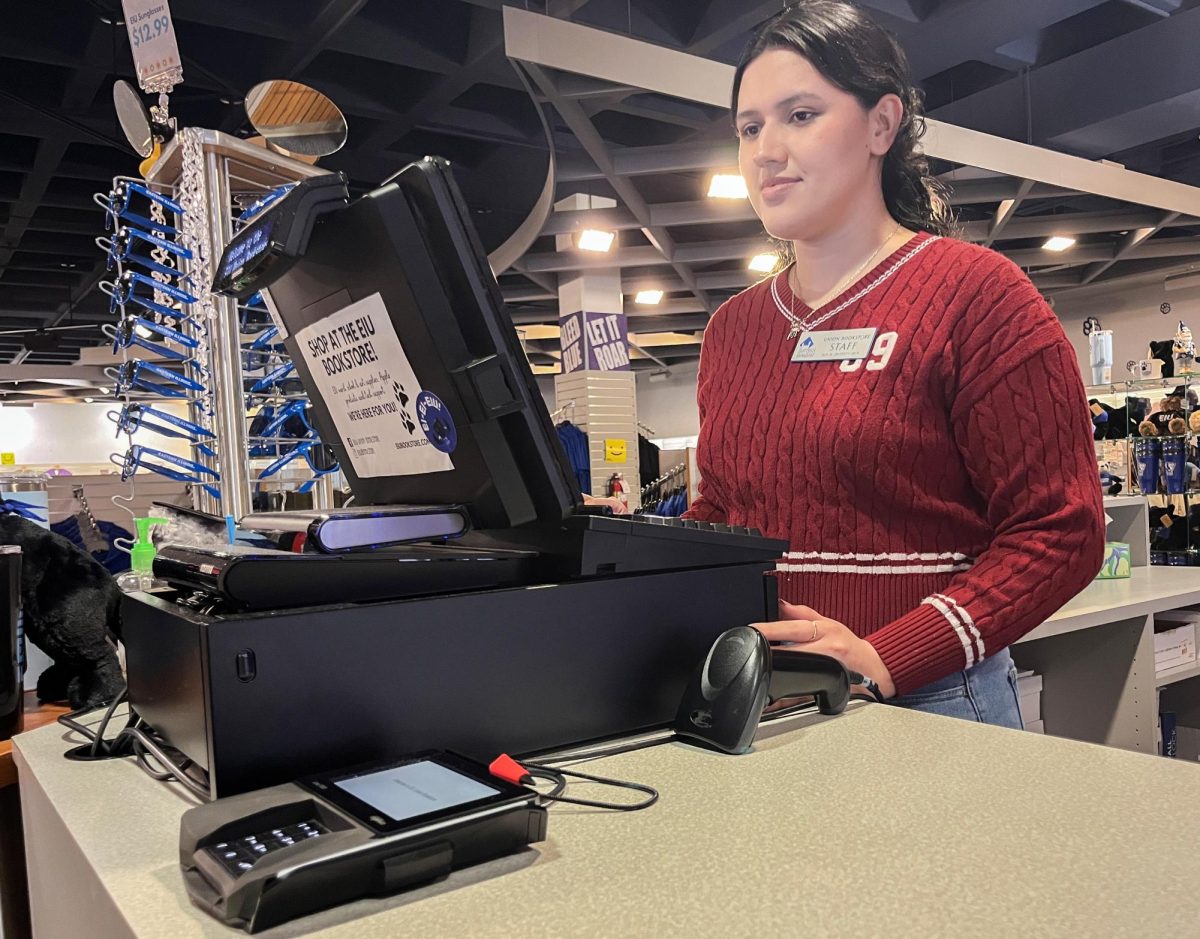

![[THUMBNAIL EDITION] (From left to right) Head football coach Chris Wilkerson works with his son student assistant coach Peyton Wilkerson at football practice at O'Brien Field on the Eastern Illinois University campus on Thursday.](https://www.dailyeasternnews.com/wp-content/uploads/2025/04/FB_25_O-1-e1744234837107-1200x596.jpg)


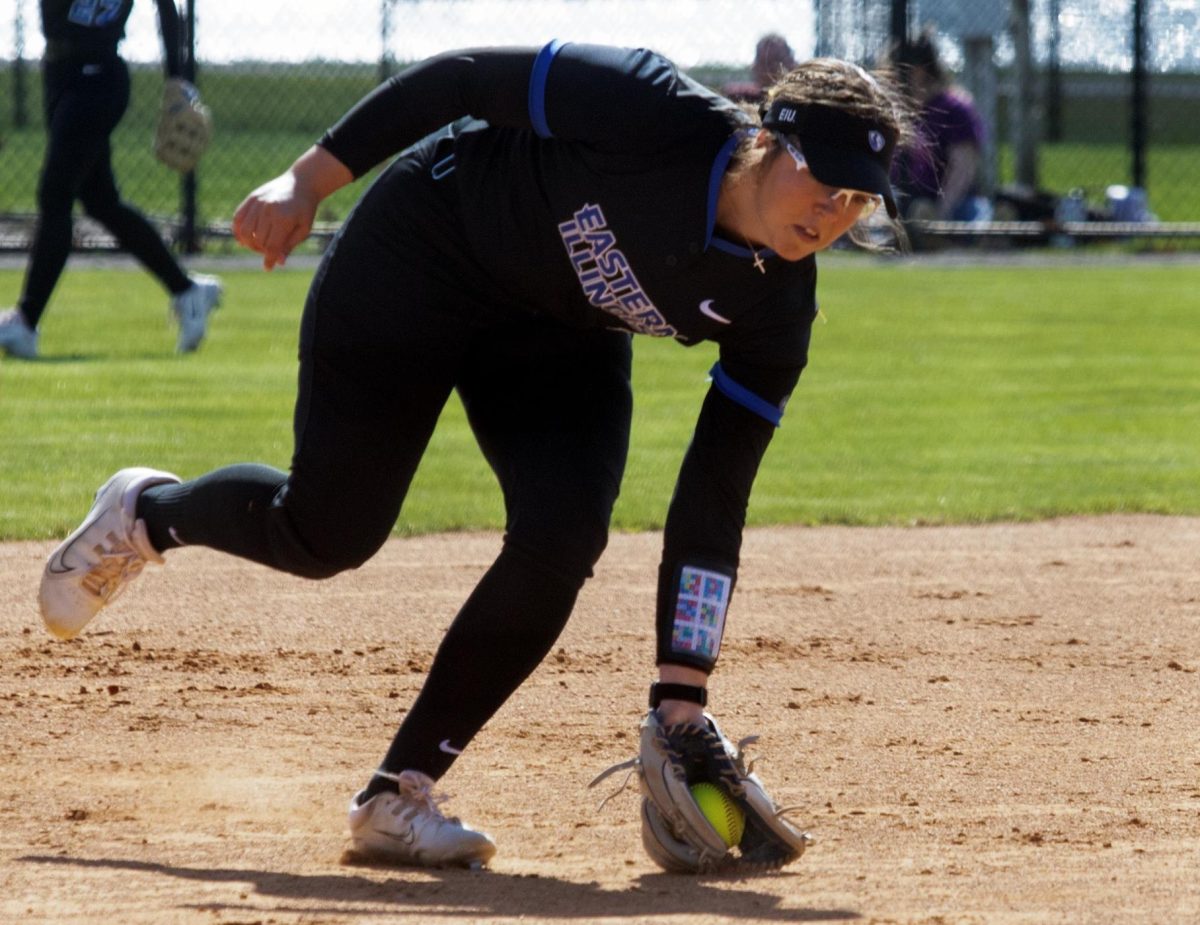

![[Thumbnail Edition] Charleston High School sophomore Railyn Cox pitches the ball during Charleston's 8-7 win over Flora High School on Monday, March 31.](https://www.dailyeasternnews.com/wp-content/uploads/2025/04/SBHS_01_O-1-e1743982413843-1200x1023.jpg)



![[Thumbnail Edition] Senior Foward Macy McGlone, getsw the ball and gets the point during the first half of the game aginst Western Illinois University,, Eastern Illinois University Lost to Western Illinois University Thursday March 6 20205, 78-75 EIU lost making it the end of their season](https://www.dailyeasternnews.com/wp-content/uploads/2025/03/WBB_OVC_03_O-1-e1743361637111-1200x614.jpg)












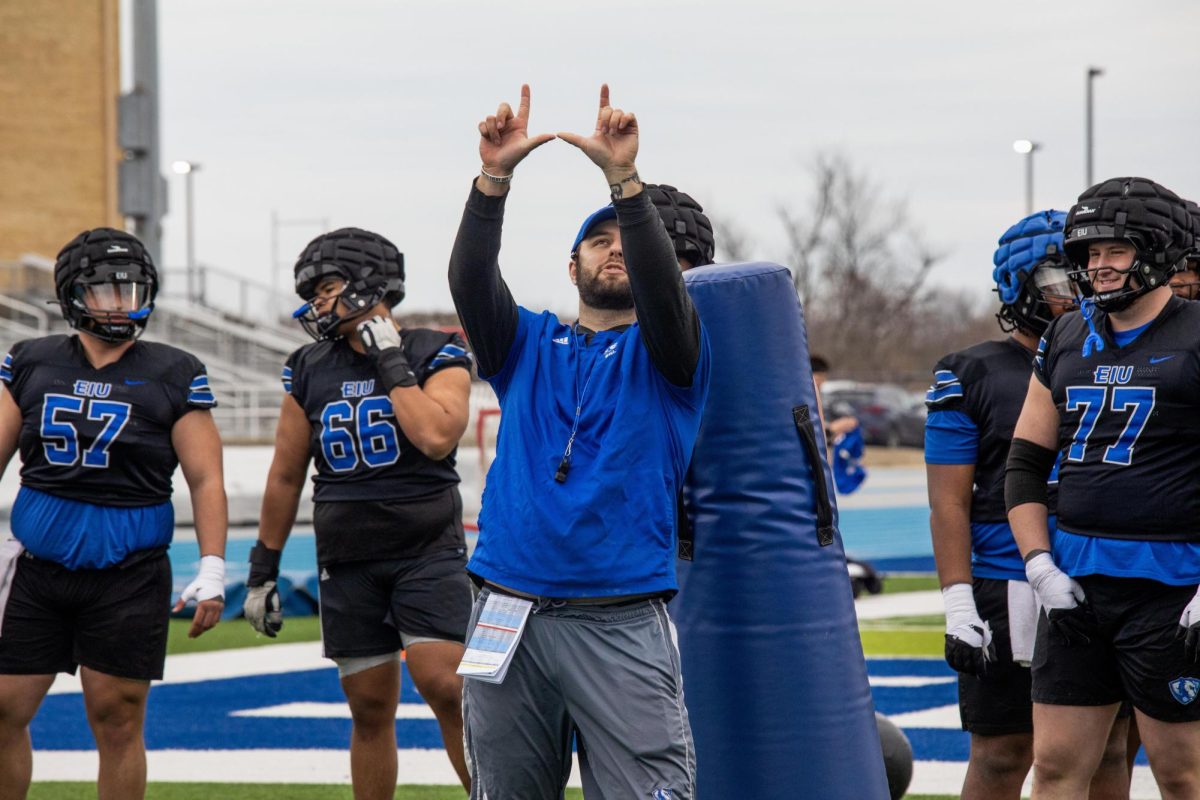







![[Thumbnail Edition] Eastern Illinois softball senior infielder Briana Gonzalez resetting in the batter's box after a pitch at Williams Field during Eastern’s first game against Southeast Missouri State as Eastern split the games as Eastern lost the first game 3-0 and won the second 8-5 on March 28.](https://www.dailyeasternnews.com/wp-content/uploads/2025/04/SBSEMO_11_O-1-e1743993806746-1200x692.jpg)
















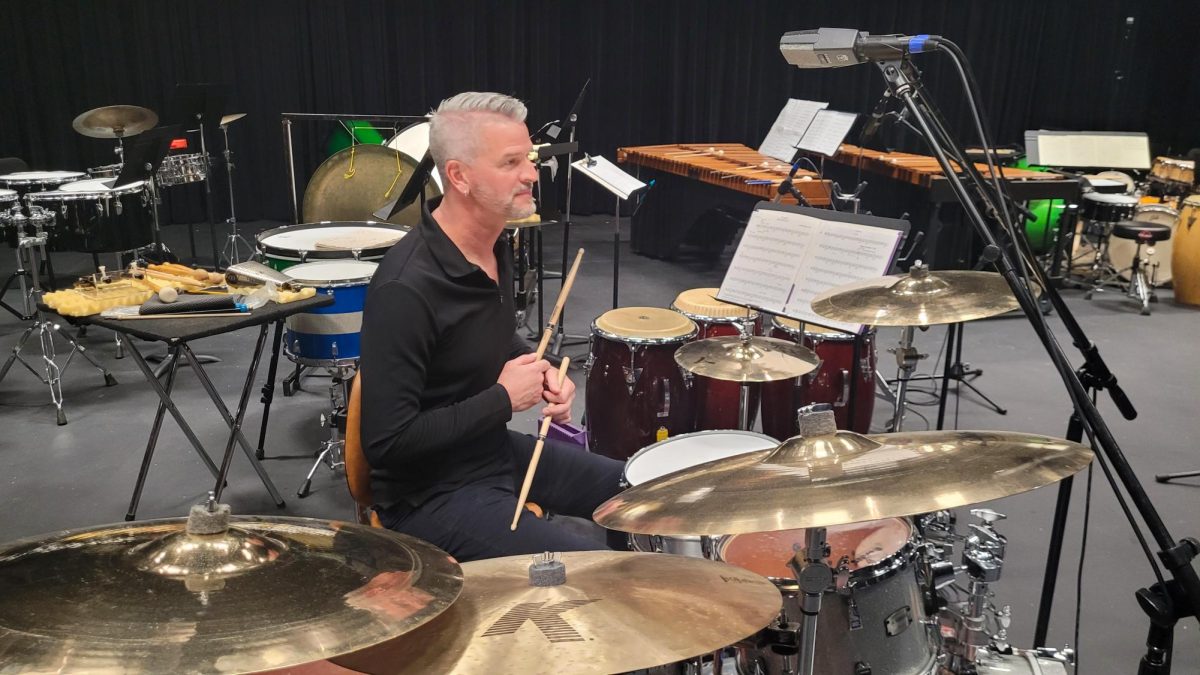
![The Weeklings lead guitarist John Merjave [Left] and guitarist Bob Burger [Right] perform "I Am the Walrus" at The Weeklings Beatles Bash concert in the Dvorak Concert Hall on Saturday.](https://www.dailyeasternnews.com/wp-content/uploads/2025/03/WL_01_O-1200x900.jpg)

